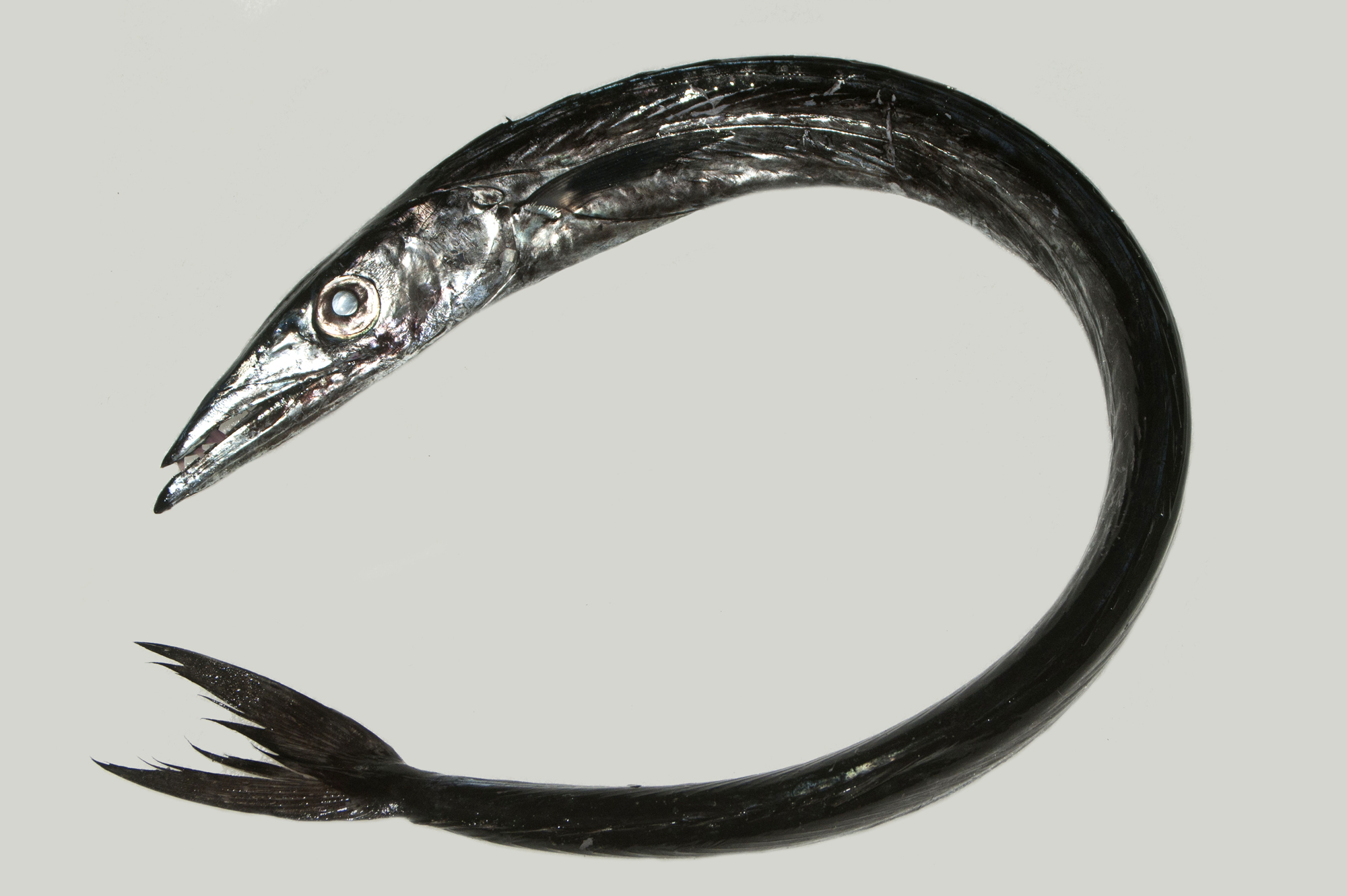Snake Mackerel, Gempylus serpens Cuvier 1829

A Snake Mackerel, Gempylus serpens, from Dumaguete market, Negros Oriental, Philippines. Source: Jeffrey T. Williams / Smithsonian Institution, National Museum of Natural History, Department of Vertebrate Zoology, Division of Fishes. License: CC BY Attribution-Noncommercial-ShareAlike
A common species, the Snake Mackerel is so named because of its long slender body.
Snake Mackerel, Gempylus serpens Cuvier 1829
More Info
|
Depth |
from surface to 200 m |
|
Distribution |
Cosmopolitan distribution, found in all tropical and subtropical seas, often in temperate seas as adults. In Australian waters, this species is found around the north of the continent (with the exception of the Gulf of Carpentaria), from Shark Bay (WA) to Wollongong (NSW). An oceanic, pelagic and mesopelagic species, found in surface waters to a depth of 200 m. |
|
Features |
D XXV-XXXII, 0, I, 11-14; A III, 10-12; P 12-15. Pelvic fins reduced to single spine and 3-4 soft rays. Second dorsal and second anal fins followed by 5-6 and 6-7 finlets respectively. Body greatly elongated and strongly compressed. Body depth 15-18 times into standard length. Head length 5.5-6.0 times into standard length. Lower jaw protrudes, both jaws with a dermal process anteriorly. Three rigid and 0-3 fang-like teeth in upper jaw, lower jaw toothless. Two lateral lines, the first runs along the dorsal contour, terminating at the end of the first dorsal fin base; the second slopes gradually towards the ventral profile to tip of pectoral fin, then runs mid-laterally. Scales present on posterior half of body. |
|
Size |
To at least 100 cm. |
|
Colour |
Dark body, all fins dark brown with darker margins. |
|
Feeding |
Known to feed on fishes, such as myctophids, sauries and scombrids, as well as cephalopods and crustaceans. |
|
Biology |
Spawns throughout the year in tropical waters. Females mature at around 50 cm, males at around 43 cm (standard lengths). Mature females produce between 300 thousand to 1 million eggs depending on size. |
|
Fisheries |
Of no particular interest to fisheries, but may be taken as bycatch on tuna longlines. |
|
Conservation |
None. |
|
Remarks |
A common, solitary species. Adults are known to migrate to the surface at night, whereas larvae and juveniles are found in surface waters only during the day and at depth during the night. |
|
Etymology |
From the Latin, serpens meaning "snake-like". |
|
Species Citation |
Gempylus serpens Cuvier 1829, Le Règne Animal, distribué d'après son organisation, pour servir de base à l'histoire naturelle des animaux et d'introduction à l'anatomie comparée. Edition 2(2): 200, Jamaica, Tropic of Cancer. |
|
Author |
Schultz, S. |
Snake Mackerel, Gempylus serpens Cuvier 1829
References
Carpenter, K.E.; Niem, V.H. (eds). FAO species identification guide for fishery purposes. The living marine resources of the Western Central Pacific. Volume 6. Bony fishes part 4 (Labridae to Latimeriidae), estuarine crocodiles, sea turtles, sea snakes and marine mammals. Rome, FAO. 2001. pp. 3381-4218.
Hoese, D.F., D.J. Bray, J.R. Paxton, & G.R. Allen. 2006. Fishes. in Beesley, P.L. & A. Wells. (eds) Zoological Catalogue of Australia. Volume 35. ABRS & CSIRO Publishing: Australia. parts 1-3, pages 1-2178.
Nakamura, I. and N. V. Parin. FAO species catalogue. Vol. 15. Snake mackerels and cutlassfishes of the world (Families Gempylidae and Trichiuridae). An annotated and illustrated catalogue of the snake mackerels, snoeks, escolars, gemfishes, sackfishes, domine, oilfish,cutlassfishes, scabbardfishes, hairtails, and frostfishes known to date. FAO Fisheries Synopis. No. 125, Vol. 15. 1993. 136 p., 200 figs.



